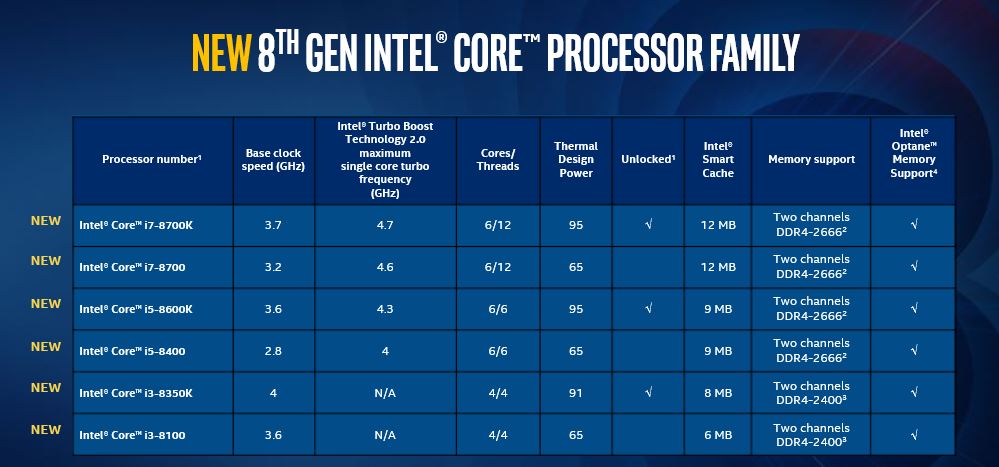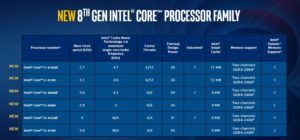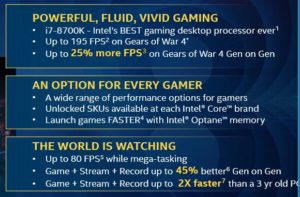

If you are looking at CPU‘s you would be wise to consider the latest batch of Intel Processors cleverly named 8th Generation Core Series. As usual Intel claims gigantic performance improvements through a series of changes to their CPU’s. Those claims may have been dubious in the past (gen over gen) but the 8th Generation really should have some serious improvements for you:


Core count is what most people can understand and in a multithreaded world, core count does make a difference. The simple explanation is that all 8th Gen Core CPU’s have two more cores than the 7th Gen (and older) brethren. This means that Core i3’s now have 4 cores, up from 2; i5’s have 6 cores, up from 4; i7’s have 6 cores, up from 4 AND they still have 6 hyperthreads meaning Core i7’s may now simultaneously process 12 threads.


All of the eight gen Core desktop CPU’s I have seen so far run at a base frequency of 350Mhz and support three 4K screens with OpenGL 4.5 and DirectX12. Intel demo’s their video performance at about notable improvement over the previous gen Core series chips. This video shows the new 8th gen UHD630 video compared with a similarly spec’d system running the 7th gen HD630. It is impressive.
While the new 8th Gen Intel Core CPU’s fit in the same LGA1151 socket as the 6th and 7th gen Core CPU’s, the motherboards are NOT compatible. This is primarily because the new Z370 chipset provides more electricity to the CPU to power the additional cores.
That is the short version of what you need to know about the new 8th Gen Core I Series processors. If you are still curious about the details check out ark.intel.com/#@Processors or skim through some of this Intel dog and pony show slides:
You might also be interested in our quick explanation of the differences between Core, Pentium, Atom… Intel Processors.
This website uses cookies.